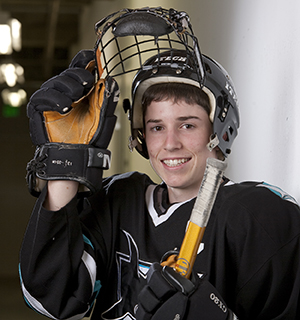A
B
C
D
E
F
G
H
I
J
K
L
M
N
O
P
Q
R
S
T
U
V
W
X
Y
Z
Click a letter to see a list of medical procedures beginning with that letter.
Click 'Back to Intro' to return to the beginning of this section.
Contact Sports and Kids: How to Keep Your Children Safe

Each year, more than 2.6 million children, age 19 and younger, visit the emergency room (ER) for both recreation and sports-related injuries. Kids are at greater risk than adults for sports injuries because they're still growing and developing.
The risk for injury is even greater if the child plays a contact sport, such as basketball, football, or soccer.
To help kids and teens prevent injury, make sure they follow these rules:
-
Wear protective gear. Make sure your children always have on the correct equipment for their sport before going onto the field or court. This may include pads, helmet, and a mouthguard. If your child must wear eyeglasses while playing, they should be made of nonshattering glass. This will help prevent eye injury.
-
Play by the rules. Dangerous practices, such as sliding headfirst in baseball or body checking in ice hockey, should be prohibited to prevent head and spine injuries.
-
Create a safe playing field. Before your child begins play, make sure that the field or court is free of debris, holes, and other potential hazards. If the game is at night, the venue should be well-lit.
-
Don't overplay. Kids should take breaks often during strenuous sports to prevent overuse injuries, like small muscle tears and fractures. The American Academy of Pediatrics also recommends taking a 1-month break from a specific sport every year to prevent injury.
-
Consider other health conditions. Children with certain conditions, like irregular heart rhythms and bleeding disorders, may not be suited for contact sports. A preseason physical is recommended to rule out any conditions that may limit your child's ability to participate in sports.
-
Warm up and tone up. Young athletes should stretch before and after every game. This will help keep their muscles and tendons flexible. Kids should also practice often and follow a conditioning program to strengthen their muscles. Strong muscles are less likely to be injured.
-
Prevent hot-weather injury. When playing outdoor sports during warmer months, make sure your child stays hydrated by drinking fluids before, during, and after a game or match. Kids and teens should take a water break every 20 minutes. During extremely hot and humid conditions, it may be necessary to reduce or stop practices.
-
Group kids by size. Kids are more likely to be injured in a contact sport if they're playing with opponents who are twice their size. Encourage your child's coach to group players by size and skill level instead of by age. If this isn't possible, the game should be modified to accommodate beginners or smaller players.
-
Recognize the signs of an injury. Quick treatment of a contact sports injury can prevent it from becoming more severe or causing permanent damage. Seek quick medical treatment if your child experiences any swelling, has severe pain, is unable to put weight on a lower limb, or has a visibly broken bone. Children should never be encouraged to play through the pain.
-
Don't rush back after injury. If your child suffers an acute or overuse injury from contact sports, be sure that they're completely free of symptoms before resuming play. A young athlete should have full range of motion and no pain or swelling in the affected area. After sustaining an injury, children should get clearance from a healthcare provider before they begin playing again.
Online Medical Reviewer:
L Renee Watson MSN RN
Online Medical Reviewer:
Thomas N Joseph MD
Date Last Reviewed:
7/1/2023
© 2000-2025 The StayWell Company, LLC. All rights reserved. This information is not intended as a substitute for professional medical care. Always follow your healthcare professional's instructions.